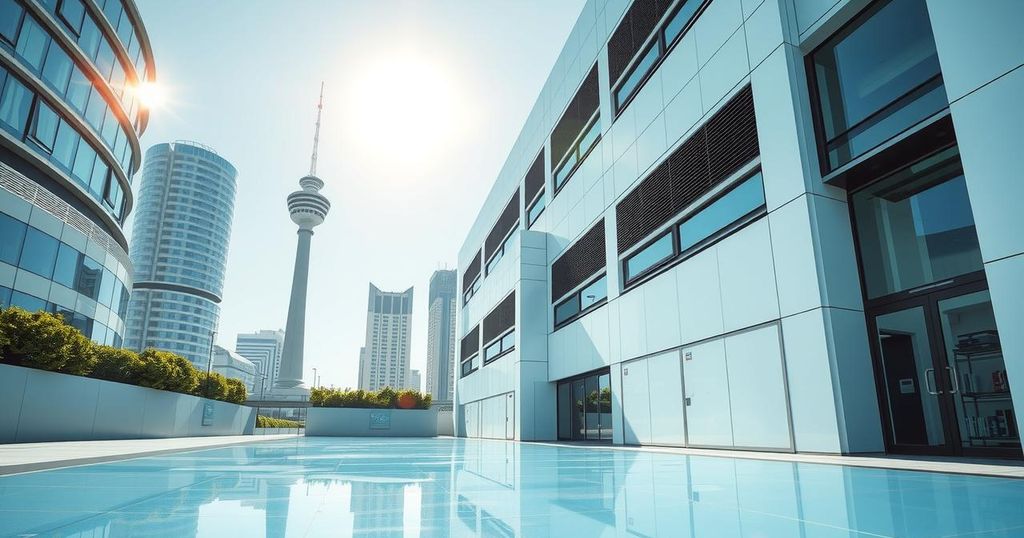AI
Tech
ARTIFICIAL INTELLIGENCE, ASIA, AUTOMOTIVE INDUSTRY, BANGKOK, BRAZIL, DATA CENTERS, INNOVATION, MATNEX, MICROSOFT, NATIONAL UNIVERSITY OF SINGAPORE, NATURE, RIO DE JANEIRO, SHANGHAI JIAO TONG UNIVERSITY, SINGAPORE, SOUTH AMERICA, TECHNOLOGY, THAILAND, UMEA UNIVERSITY, UMEÅ UNIVERSITY, UNIVERSITY OF TEXAS, UNIVERSITY OF TEXAS IN AUSTIN, US, VENTURE CAPITAL, YUEBING ZHENG
Amina Hassan
0 Comments
AI Helps Find Formula for Paint to Keep Buildings Cooler
- AI-engineered paint helps reduce urban heat island effect.
- New paints could lower air-conditioning costs significantly.
- Collaboration among international universities drives innovation.
- Research shows potential savings of 15,800 kilowatts per building.
- AI speeds up the material design process remarkably.
AI Paint Development: A Game Changer for Urban Cooling
Artificial intelligence is revolutionizing how we approach materials science, and recent advancements prove just that. A group of scientists is claiming that AI-engineered paint can significantly combat the urban heat island effect, which has become increasingly problematic in bustling cities. This new paint can keep buildings cooler—between 5°C and 20°C cooler—than standard paint when exposed to the sweltering midday sun; this could also lead to reduced air-conditioning costs, a welcome relief for many city dwellers struggling with those bills.
Collaborative Research Yields Innovative Paint Solutions
Collaboration among researchers from the University of Texas, Shanghai Jiao Tong University, the National University of Singapore, and Umeå University in Sweden has spurred this innovative approach. The scientists have created paint formulas that best reflect sunlight and efficiently emit heat, which are mentioned in a peer-reviewed article in the esteemed journal Nature. If applied to the rooftop of an average four-story apartment block, just one of the new AI-enabled paints could save approximately 15,800 kilowatts of electricity in particularly hot areas, like Rio de Janeiro or Bangkok. Now, imagine multiplying that by a thousand blocks!
The Future of Material Design Looks Bright
Yuebing Zheng, a professor at the University of Texas and co-leader of the study, expressed excitement at the speed with which AI can create materials that significantly enhance thermal performance. Zheng noted, “Our machine learning framework represents a significant leap forward in the design of thermal meta-emitters.” The professor elaborated, explaining that tasks that once spanned months could be completed in days thanks to AI. So, instead of the long process of trial and error, researchers can now follow AI’s precise instructions to select the ideal structures and materials in a much more efficient manner. Dr. Alex Ganose from Imperial College London echoed this sentiment, saying, “Things are moving very fast in this space.”
In summary, the application of AI in the development of new cooling paints represents a transformative leap in material science. This technology not only promises to decrease urban heat effects but also cuts down energy consumption, thereby fighting climate change on multiple fronts. With collaborative efforts from international research teams, the future of thermal management paints—and perhaps other materials—looks incredibly promising thanks to machine learning capabilities.




Post Comment